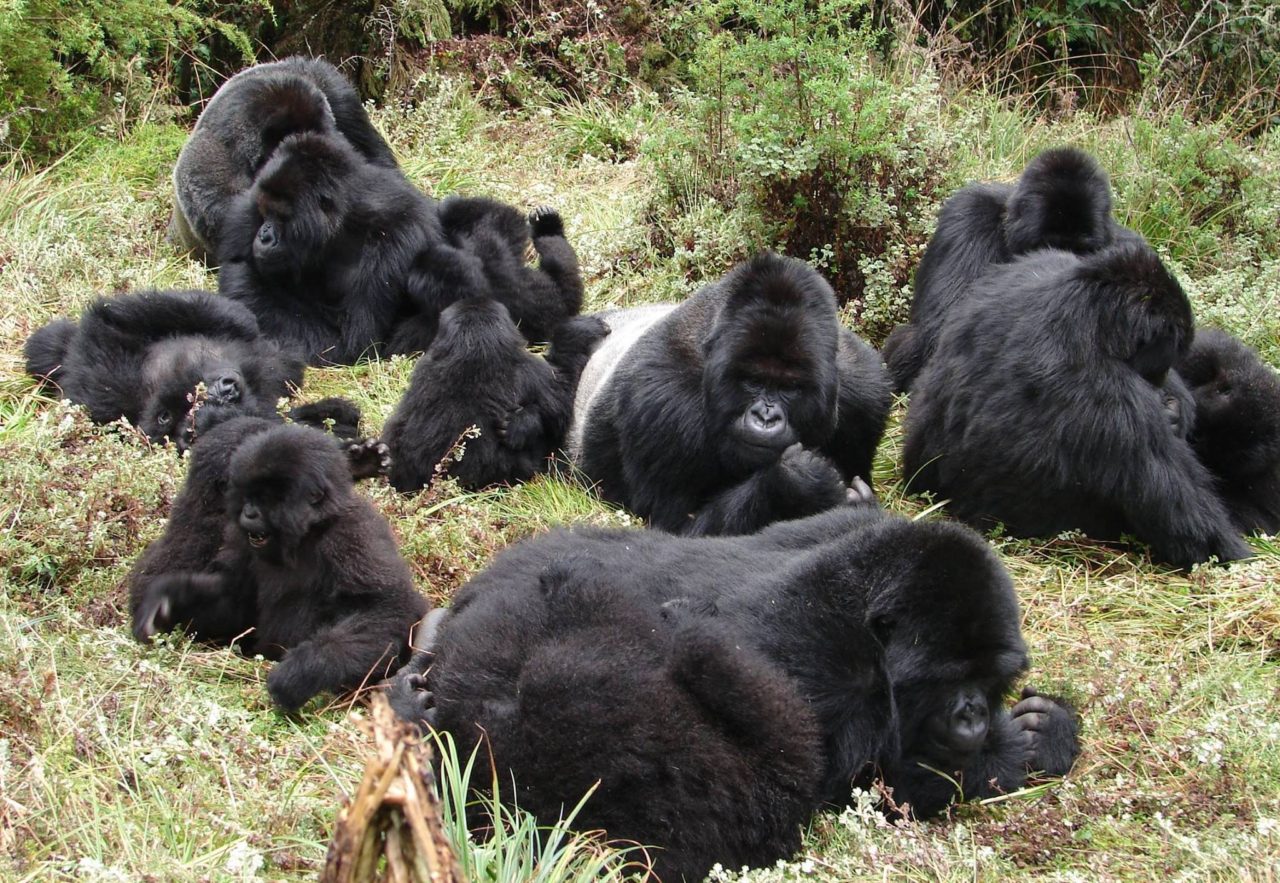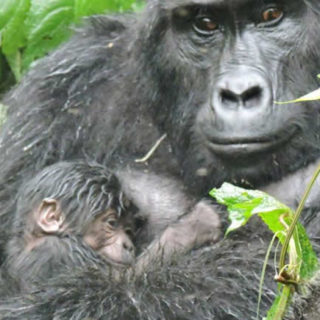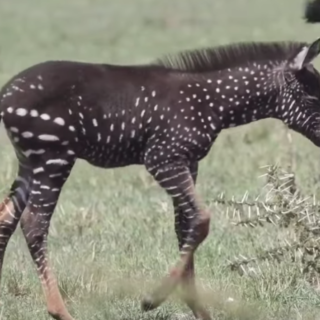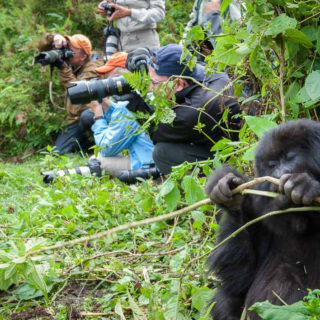Gorilla Groups in Uganda and Rwanda 2020
Gorilla Groups: Mountain Gorillas are one of the most stunning tourist enchantments that convene tourists from all vicinities of the world to Uganda’s Mgahinga national park and the Bwindi impenetrable national park plus Rwanda’s Volcanoes National Park. These are the only parks that hold the world’s gorilla population making them peculiar.
The mountain gorilla population is on the increase with a number more than 1000 individuals with Uganda’s dense forests being home to over half of the population, this making them the only wild ape population whose numbers are known to be increasing.
This has been as a result of the intensive daily protection and family habituations by the park authorities of Rwanda, Uganda and the Democratic Republic of Congo, quite a huge success for conservation at a time when such success stories are increasingly rare.
As a controlling and protective measure, mountain gorillas in these areas have been habituated in different family – gorilla groups to ease their trekking, security and health conditions among others.
Despite the mountain gorillas’ astonishing and interesting facts, they remain wild animals whose group size, location in the forest and behavior stands to change at any moment of the day, something that should be kept in mind.
Mountain gorilla groups in Uganda can be witnessed while on a trek to the different trekking sectors in which unique gorilla families are habituated. This makes it easy to locate particular groups depending on which sector in which they reside. Uganda’s mountain gorilla families and groups with their respective sectors in which they reside include;
Habituated Mountain Gorilla Groups in Uganda | Gorilla Families in Uganda 2020
Kyaguliro Gorilla Family
This is a gorilla family located in the Ruhija sector of Bwindi Impenetrable National Park that was habituated solely for research. This family was initially led by an aging silverback, Zeus, that unfortunately died in exile after being ousted by his rival Rukina. The Kyaguliro family consists of 15 individuals including 2 silverbacks that will provide a fascinating gorilla trek.
Nyakagezi Gorilla Family
Nyakagezi gorilla Family is the only group located in the Mgahinga Gorilla National Park. It constitutes of 3 silverbacks, 2 adult females, 2 black backs and 2 infants and these are led by Mark, the dominant silverback succoured by Mafia, Ndungutse and Bugingo. Nyakagezi family is one of the easiest to track given the fact that it prefers a narrow home range for feeding, nesting, relaxing and recreation.
In May 2013, a new baby was born increasing the group number to 10.
Mubare Gorilla Family
The Mubare Gorilla Group is the oldest habituated gorilla family in uaganda having been opened for tourism in 1993. The family derives its name from Mubare Hill located in Bwindi Impenetrable Forest where gorillas were first sighted by trackers. This family is located in the Buhoma sector with a population of 8 individuals including 1 silverback.
The family’s population originally made a count of 18 individuals that was led by the dominant Silverback Ruhondeza. Regrettably, over years the family lost many members until there were only 5 left in 2012 due to the dispersing to other groups, life loss during fights and death of some baby gorillas. As at the beginning of 2018, the Mubare family is led by Silverback Kanyonyi who managed to increase the family population to 11 members. News about Mubare Gorilla groups
Habinyanja Gorilla Family
This family gets its name from a Rukiga word “Nyanja” meaning “a place with water” a place where this group first resigned. The Habinyanja family was habituated in 1997 and first visited in 1999. Its located in the Buhoma sector ranging from Kahororo to Rubona with a current population of 17 individuals including 2 silverbacks.
During the habituation times, the group was initially led by the dominant Silverback Mugurisi, which means “Old man”. His two brothers Rwansigazi and Mwirima shared power after his death but they were so different that it couldn’t continue. Rwansigazi was an adventurous gorilla and so much preferred travelling, while Mwirima liked to stay at one location.
In 2002, the two eminent silverbacks decided to part ways without any power struggle. The gorilla members that spoored Rwansigazi retained the name Habinyanja and the those that stayed with the unadventurous Mwirima were recorgnised as the Rushegura Family.
After a while, Rwansigazi silverback surrendered power to Makara Silverback who is now the leader.
The Habinyanja gorilla group is currently pervaded with power struggles, intrigues within the group.
Disastrously, in June 2011, the friendly blackback Mizano was found dead with evidence of spear wounds about the shoulders and neck, which is allegedly believed to have been a group of poachers with dogs that ran into the group.
Rushegura Gorilla Family
This is one of the 12-habituated gorilla groups found in the Buhoma sector found in the southern parts of Bwindi impenetrable forest. This group was as a result of separation from the larger family Habinyanja in 2002. The break away was lead by Mwiriwa who took with him seven members. His devotion to start up a stable peaceful family was a success as individuals later increased to 19 by April 2010.
The group is known to be one of the calmest families and usually stay in the vicinity of Buhoma village. At an estimated 25yrs of age, Mwiriwa is undoubtedly the most dominant silverback in his group and who doesn’t back away from showing his strength during fights with wandering wild gorilla groups.
Bitukura Gorilla family
It is one of the latest habituated groups within Bwindi Impenetrable forest located in Ruhija sector of the park. It is an exhilarating group with 4 silverbacks with Ndahura the 2nd youngest silverback being the leader. He presumed power from former Silverback Karamuzi who was aging at 40 and now retired.
The family initially had a population of 24 individuals but later reduced to 14 due to other members dispersing to other groups. Nevertheless, with great appreciation to the close bond with the Kyaguriro family with whom they have regularly get-togethers, Bitukura now looks a peaceful and stable family closer to one another.
Oruzogo Gorilla Family
Oruzogo family was the second habituated gorilla family that inhabits in the Ruhija areas of Bwindi impenetrable National Park. Oruzogo family has a population of 25 individuals including 2 silverbacks led by Silverback Tibirikwata.
It was opened for tourism in mid 2011 sinjce then experiencing a population growth with new births. An adult female Ntamurungi gave birth to a baby gorilla in June 2011 and Musi gave birth in October 2011. Fresh joy came in when a set of twins was born in March 2012.
Oruzogo is an extremely exciting group because of its playful juveiles and young ones who impress a lot of tourists to the Ruhija sector.
Some of other family members include Silverback Busungu(short tempered), Kaganga(protruding crest), Otaka(small and peaceful), Bwoba(who’s a coward), Mutesi(calm and relaxed), Kashundwe(has a hole in her nose), Nyakiina (a hole-like depression on her elongated nose), Kakobe(resembles a baboon), Birungi(she is beautiful) and the juveniles Kashura, Karimi, Kirombe, Kanywani(friendly), Katono and Buchura(who is the youngest).
Nshongi Gorilla Family
The Nshongi gorilla family inherits its name from the river close to which it was first seen. It is located in the Rushaga sector with a population of 26 individuals including 4 silverbacks.
The native word “Nshongi” means “honey” and referred to the deep color of the river. It was opened for tourism in 2009 with 36 members being the largest gorilla group ever habituated. Most remarkably were the 3 silverbacks and the seven blackbacks that lived in harmony with each other and did not make any attempt for leadership.
However, in July 2010, the group split into two: the Nshongi group with 26 members including 4 silverbacks and a newly formed family led by the silverback Mishaya with 10 members.
Mishaya Gorilla Family
This is another family located in the Rushaga sector with a population of 12 individuals including 1 silverback. Silverback Mishaya was initially part of the Nshongi family but later in 2010 made up his mind to start up its own family.
Having a pugnacious character, he was able to gather females from other groups in the area and expand his group. In April 2011, he clashed with a non-habituated gorilla family, which resulted in serious injuries for himself and a 2-year-old infant but nevertheless still stood his ground.
Kahungye Gorilla Family
This is one of the new gorilla families found in the southern sector of the Bwindi impenetrable national park. It was opened for tourism but in a year’s time the group had split to give birth to a new Busingye family.
It co-exists in the Rushaga tracking sector with a count of 13 individuals including 3 silverbacks. Silverback Rumanzi is the leader of the group deputized by Gwigi (meaning Door).
Busingye Gorilla Family
The Busingye Gorilla family part ways with the Kahungye gorilla family in 2011 under the leadership of silverback Busingye who decided to split from Kahungye group and create his own family.
Busingye means “peace” which is really a surprising contradiction since this ambitious silverback is known for his legendary fights with other gorilla groups where he mercilessly grabs females to add to his family.
Bweza Gorilla Groups
This is a gorilla family that was as a result of separation of the Mishaya family from the largest gorilla group, the Nshongi family. Later on, Bweza another silverback also gained independence from the Mishaya silverback to separate himself rom the rest of the group.
This new group was opened for tourism in December 2012.
NOTE: The sizes of these gorilla families vary from time to time as a result of separation, welcome of new born, conflict, divorce, deaths, fleeing of some family members. Some strong male gorillas may attack another gorilla family to raid females in a bid to expand their families.
Prior preparations of gorilla trekking is paramount which requires purchasing of gorilla permits which go to $600 per permit. Tourists too should equip themselves with thick and warm clothings, heavy boots, torches, proof cameras, plus beddings incase gorilla trekking goes to more than one day.
Gorilla Trekking And Tracking | Uganda and Rwanda
3-Day Uganda Gorilla Habituation Experience
Tourists should be briefed with the park rules and regulations like maintaining silence and NOT littering around the park among others.
The months of June to July and December to February are some of the drier months in the Bwindi Impenetrable forests and thus the peak season of the park hence offering the best time to trek the gorillas.
Rwanda’s Volcanoes National Park today has a number of 10 habituated gorilla groups for visitors to see one set aside for research from which the Kwita Izina baby gorilla naming ceremony are selected.
Rwanda avails an average of 80 permits per day for tourists to watch gorillas with a single permit costing 1500 which is paid by all travellers incuding the Rwanda nationals.
Habituated gorilla groups to track in Rwanda 2020
Susa group (Susa A)
This is the most popular family that is well known for being the group studied by Dian Fossey during the time she spent in Rwanda between 1967 and 1985. It previously had 42 members which later split into two groups in 2008 due to its large capacity. The latter group was referred to as Susa B or the Karisimbi group.
The Susa family adopted its name from the neighbouring Susa River that flows through their home. It is also unique for its playful twins Byishimo and Impano. The Susa A currently holds a population of 33 memebrs including 2 silverbacks that inhabits on the lower slopes of Mt Karisimbi.
Karisimbi group (Susa B)
The Karisimbi family is compromised of 16 individuals with 2 silverbacks inclusive. It is arguably the hardest group to track as it resides in the upper slopes of Mt Karisimbi at an altitude of 4507 after breaking up with the Susa A group in 2008. Tracking this group is quite challenging that it requires RDB rangers to track the group a day before.
Titus family
The Titus family acquired its name from the dominant silverback Titus that was born in Dian Fossey’s days of research at Karisoke gorilla group. Titus sadly lost his family to poachers hence being raised up by unrelated male gorillas. Dian Fossey stated that the infant seemed “underdeveloped and lanky” with difficulties in breathing. Depite of all the tragedies Titus faced, he still made it to mature ages.
Amahoro Group
“Amahoro” is a word that means peace in Kinyarwanda. Luckily, the Amahoro family is also a peaceful and friendly family witnessed and confirmed by almost everyone who tracked and visited the family. It is led by a silverback called Ubumwe a name meaning togetherness.
Amahoro family has 18 individuals inhabiting the slopes of Mt Bisoke, led by Silverback Ubumwe, two blackbacks, five juvenile gorillas, five adult females and four young gorillas. Nevertheless, numbers stand to change due to migrations, births and deaths.
Umubano Gorilla Groups
This is a group that comprises of 13 members that broke up from the Ubumwe silverback as a result of constant battles between Charles and Ubumwe. Charles later succeeded in breaking away forming the Umubano group.
Sabinyo Gorilla Family
This gorilla family acquired its name after Mt Sabinyo, a part of the enormous Virunga Volcanoes that translates to “old man’s teeth” in Kinyarwanda. The Sabinyo group was initially known as the Amavubi, word that means “wasps” in the native language. It also turned out to be the hardest to habituate whose formation was a mystery.
Sabinyo family is a group known for its group commander, Guhonda who is the largest silver back in the park weighing about 220kgs.
The family comprises of 13 members that reside on the gentle foothills of Mt Sabinyo and Mt Mgahinga.
Agashya Group (Group 13)
Also known as Group 13, the group was initially led by a silverback called Nyakarima but was later overthrown by Agashya meaning “the New” who is the leader and the family was named after him. Agashya family presently populates 27 members with Agashya as the only silverback.
Kwitonda Group
This is a migrant gorilla family of 23 members including 4 silverbacks named after a dominant silverback called Kwitonda which means the “Humble one”. It is such an onerous group to track since it keeps ojn wandering in the slopes of Mt. Muhabura just like the Karisimbi Group. It holds its origin from the Democratic Republic of Congo.
Ugenda Group
This is another difficult group to track consisting of 11 members including 2 silverbacks unique of its behavior of roaming from place to place since it has no permanent home. Just like its name states “Ugenda” meaning “moving or mobile.”
Hirwa Group
Hirwa name means the “lucky one” in native Kinyarwanda. It was formed in 2006 by some memebers of the Sabinyo Group and others from the Agashya Group. More members joined in to make it 16 individuals since the group keeps on wondering across borders from Mt Sabinyo to the side of Mt Gahinga making its numbers subject to change.
Bwenge Gorilla Groups
Bwenge is a Kinyarwanda word which means “wisdom” and its no wonder the reason as to why it featurted the movie “Gorillas in the Mist”. This group was habituated in 2007 by a dorminant silverback Bwenge and also named after him.
Bwenge group has its home in the slopes of Karisoke Volacno between Karisimbi and Bisoke mountains and also witnessed dark times when its 6 infants died. The group, nevertheless, recovered and now has 11 members including one silverback.
Are you protective and security conscious in character? If so, you have to reserve your permits for this Mountain Gorilla group because you have a lot in common.
Please note that only a maximum of 8 individuals who are at least 15 years of age are allowed to trek gorillas. The trek usually lasts between 2 – 8 hours depending on how difficult it gets to access these gorillas, also basing on their previous day movements.
This time is inclusive of a full hour encounter with these gentle giants in their natural habitats, a perfect opportunity for you to photograph the awesome moments, bond with them and watch them go through their day-to-day life.
Want to visit a security conscious and protective Agashya? We can help you do that at the best rates possible. You can simply contact us for the best experience in the Volcanoes National Park.
Conclusively with the description given above, you should have a good picture of the characteristics and nature of each gorilla group and are in position to choose which gorilla groups or family to track on your Rwanda safari tour while in the Volcanoes National Park.





